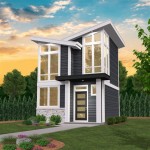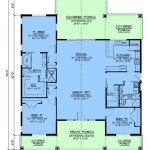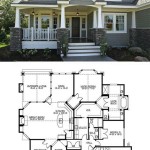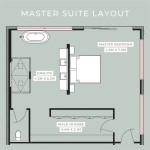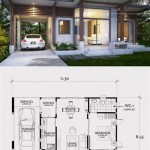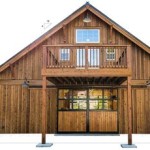Four Bedroom Duplex Floor Plan: Maximizing Space and Functionality
A four-bedroom duplex floor plan represents a significant investment in a living space that balances individual privacy with communal living. This type of dwelling is particularly attractive to families, multi-generational households, or individuals seeking rental income through one of the units. The design considerations for a four-bedroom duplex are extensive, ranging from efficient space utilization to ensuring comfortable living conditions for all occupants. This article delves into the critical elements of designing an effective four-bedroom duplex floor plan, highlighting essential considerations for optimizing functionality and maximizing the return on investment.
Understanding the Core Components of a Four-Bedroom Duplex Plan
Before embarking on the design process, a comprehensive understanding of the essential components is crucial. These include the bedroom configuration, communal areas, utility spaces, and accessibility features. Each of these facets plays a vital role in determining the overall livability and practicality of the duplex.
The bedroom allocation typically involves two bedrooms per unit, or a three-bedroom unit combined with a single-bedroom unit. The distribution will depend on the target demographic and the specific goals of the owner. For instance, if the intention is to rent out one of the units, a configuration with similar bedroom counts in each unit might be preferable to attract families. Conversely, a larger unit combined with a smaller one might cater to a homeowner residing in one unit and renting the other to a single individual or couple.
Communal areas, encompassing living rooms, dining areas, and kitchens, need to be strategically positioned to foster comfortable interaction while ensuring adequate separation between the units. Open-concept designs are often favored for their ability to maximize natural light and create a sense of spaciousness. However, careful consideration must be given to noise transmission between units. Soundproofing measures, such as insulated walls and flooring, are essential to maintain privacy and minimize disturbances.
Utility spaces, including bathrooms, laundry rooms, and storage areas, must be efficiently incorporated into the floor plan. The number of bathrooms per unit is a key consideration; generally, a minimum of one full bathroom per unit is necessary, with additional bathrooms being desirable, especially in larger units. Laundry facilities can be either shared or separate, depending on the desired level of autonomy for each unit. Adequate storage areas are also crucial, as insufficient storage can lead to clutter and diminish the overall living experience.
Accessibility is a fundamental aspect of duplex design, particularly if the intention is to cater to a diverse range of occupants. Incorporating universal design principles, such as wider doorways, accessible bathrooms, and ramps or elevators (depending on the number of stories), can significantly enhance the appeal of the duplex and ensure that it meets the needs of individuals with mobility limitations. These considerations can also add resale value to the property.
Optimizing Space Utilization and Layout Design
Effective space utilization is paramount in a four-bedroom duplex floor plan. Given the constraints of the building footprint, maximizing usable space while maintaining a comfortable living environment requires careful planning and innovative design solutions.
One key strategy is to minimize wasted space. Hallways, for instance, should be streamlined and kept to a minimum width to allow for efficient circulation without sacrificing valuable square footage. Incorporating built-in storage solutions, such as shelving units, cabinets, and window seats, can also help to optimize space utilization and reduce clutter.
The layout of each unit should be carefully considered to ensure a logical flow and efficient use of space. The placement of bedrooms, bathrooms, and living areas should be strategically planned to minimize noise transmission and maximize privacy. For example, positioning bedrooms away from shared walls or communal areas can help to reduce disturbances and create a more peaceful living environment.
The orientation of the duplex on the lot is another important factor to consider. Optimizing the building's orientation to maximize natural light and ventilation can reduce energy consumption and improve the overall comfort of the living spaces. Strategies such as incorporating large windows, skylights, and strategically placed vents can help to harness natural light and airflow, creating a brighter, more airy atmosphere.
Furthermore, the exterior design of the duplex should complement the surrounding environment and enhance the curb appeal of the property. A well-designed exterior can not only increase the value of the duplex but also create a positive impression on potential tenants or buyers. Features such as a well-maintained landscaping, attractive siding materials, and a welcoming entrance can significantly enhance the overall aesthetic of the duplex.
Vertical space should also be considered. If the duplex has multiple stories, the staircase design should be both functional and aesthetically pleasing. A well-designed staircase can serve as a focal point within the duplex, adding visual interest and enhancing the overall design. The placement of the staircase should also be carefully considered to minimize its impact on the usable floor space.
Consider the use of shared amenity spaces. A shared outdoor area, like a patio or garden, can be a valuable asset that enhances the appeal of the duplex and provides residents with a space to relax and socialize. When designing shared spaces, it is important to consider the needs and preferences of both units, ensuring that the space is accessible and enjoyable for all residents.
Key Considerations for Privacy, Soundproofing, and Code Compliance
Privacy, soundproofing, and code compliance are critical elements in the design of a four-bedroom duplex. These considerations are essential for ensuring a comfortable and safe living environment for all occupants.
Maintaining privacy between the units is of paramount importance. This can be achieved through careful layout design, strategic placement of windows and doors, and the incorporation of soundproofing measures. Walls separating the units should be constructed with sound-dampening materials to minimize noise transmission. Additionally, windows and doors should be chosen for their soundproofing capabilities.
Soundproofing measures should extend beyond the walls separating the units. Flooring, ceilings, and even plumbing systems can transmit noise. Installing sound-dampening underlayment beneath flooring, using resilient channels in ceiling construction, and wrapping pipes with insulation can significantly reduce noise transmission.
Compliance with local building codes is essential for ensuring the safety and structural integrity of the duplex. Building codes regulate various aspects of construction, including fire safety, structural stability, and accessibility. Consulting with a qualified architect or engineer is crucial for ensuring that the duplex design meets all applicable code requirements.
Fire safety is a particularly important consideration in duplex design. Fire-rated walls and doors, smoke detectors, and fire extinguishers are essential for protecting occupants in the event of a fire. Additionally, the duplex should be designed with multiple escape routes to ensure that occupants can safely evacuate in an emergency.
Accessibility requirements are also crucial. Building codes often mandate that at least one unit in a duplex be accessible to individuals with disabilities. This may involve incorporating features such as wider doorways, accessible bathrooms, and ramps or elevators.
Ventilation is another important aspect of code compliance. Proper ventilation is essential for maintaining indoor air quality and preventing moisture buildup, which can lead to mold growth. Building codes often specify minimum ventilation requirements for various areas within the duplex.
Furthermore, consider the placement of utilities. Ensure that each unit has separate utility meters for services like electricity and water. This fosters individual accountability and prevents disputes over utility costs. Separate entrances for each unit are also desirable, promoting a sense of independence and privacy.
The design of a four-bedroom duplex floor plan requires a holistic approach, integrating considerations of space utilization, layout design, privacy, soundproofing, and code compliance. By carefully addressing these elements, it is possible to create a dwelling that maximizes functionality, enhances the living experience for all occupants, and provides a sound investment for the owner.

Convenient 4 Bedroom Mini Duplex Floor Plan Sample

4 Bedroom Duplex Ref 4018 N House Plans

Pin Page

Pin Page

4 Bedroom House Plan Examples

4 Bedroom Duplex House Plan Family Bed Floor Instant Semi Detached Buy Now
4 Bedroom House Plans Top 8 Floor Design Ideas For Four Bed Homes Architecture

20 4 Bedroom House Plans Ideas For N Kerala Styles

4 Bedroom Duplex Ref 4039 N House Plans

For Luxury Four Bedroom Semi Detached Duplex Wuye Abuja 4 Beds Baths Ref 349064


